Apartment living in India doesn’t mean giving up your dream of growing fresh herbs and vegetables. Meet Priya from Mumbai who lives in a tiny 1BHK flat. She thought growing plants was impossible until she discovered vertical gardening. Now she grows 15 different herbs on her 4×6 feet balcony and saves ₹800 monthly on grocery bills!
What are the techniques of vertical gardening? This question comes up in every apartment building across India. The techniques of vertical gardening are simple methods anyone can learn in one weekend to transform their small spaces into productive green havens.
With 80% of Indians living in apartments, space comes at a premium. But the desire for fresh, homegrown food remains strong. Vertical gardening solves this problem by teaching plants to grow upward instead of spreading outward. Think of it as building a green high-rise for your plants!
Learn 8 proven techniques that cost less than ₹1000 to start and can save ₹500-1000 monthly on groceries while beautifying your home and purifying the air naturally.
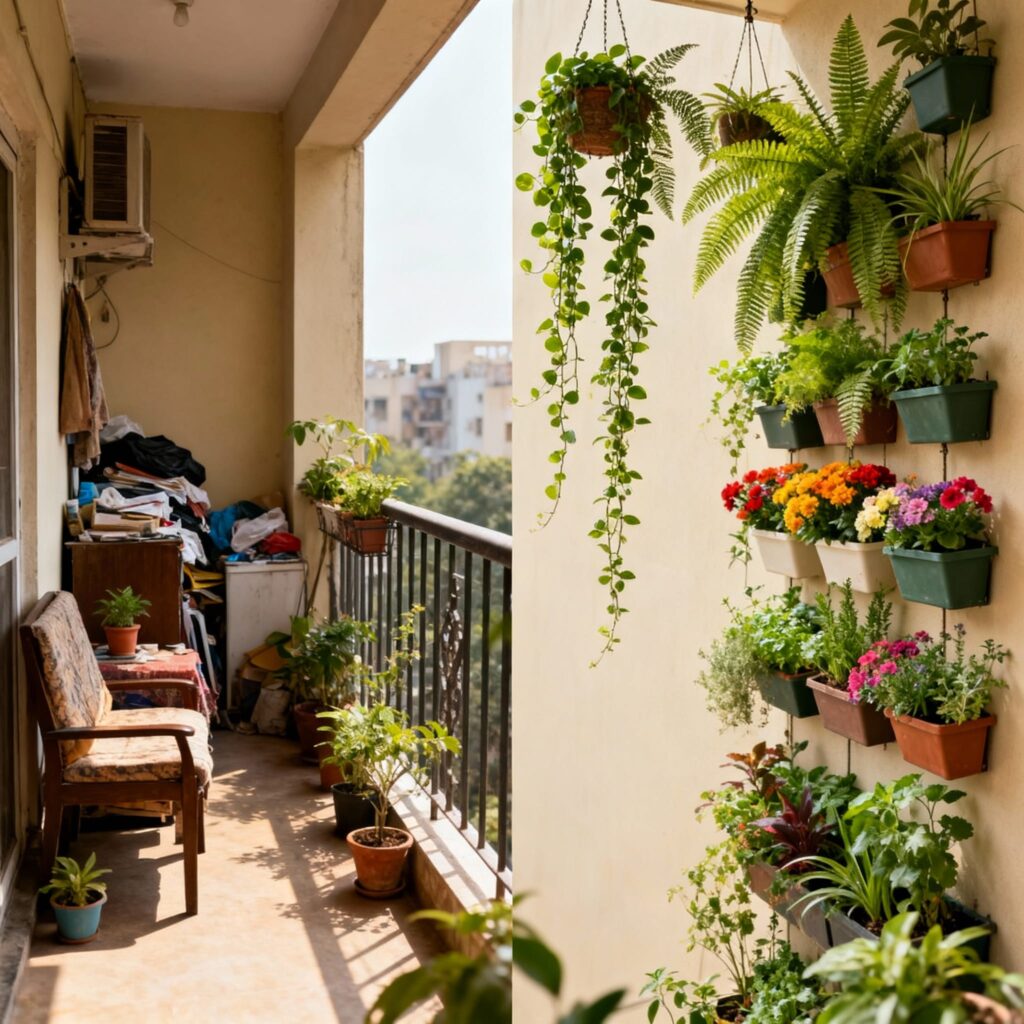
Why Vertical Gardening Changes Everything for Indian Homes
Space Multiplication Magic
Ravi transformed his tiny 3×4 feet balcony into a productive garden that yields 2kg vegetables monthly using vertical space. One vertical wall measuring 6×4 feet provides growing space equivalent to 50 regular pots. That’s incredible efficiency for apartment living!
This space-saving approach works perfectly in Indian cities where every square foot counts. You can grow herbs, vegetables, and flowering plants without sacrificing your living or walking space.
Financial Benefits That Add Up
Monthly grocery savings are substantial. Mint costs ₹10 per bunch, basil ₹15 per bunch, and coriander ₹12 per bunch in markets. Growing these vertically saves ₹500-1000 monthly on herbs alone. Initial setup costs ₹800-2000 and pays for itself in 3-4 months.
Neha from Delhi saves ₹800 monthly by growing coriander, mint, and green chilies on her kitchen balcony using simple vertical techniques.
Health Benefits You’ll Notice Immediately
Six money plants on one vertical wall purify air like an ₹8000 electronic air purifier. Fifteen minutes daily gardening reduces work stress significantly. You’ll always have pesticide-free herbs for cooking, ensuring your family’s health and safety.
Perfect for Indian Climate Conditions
Vertical gardens handle monsoons better through improved drainage. Green walls reduce balcony temperatures by 3-5°C during scorching summers. You can easily rotate seasonal plants on vertical structures, adapting to India’s diverse weather patterns throughout the year.
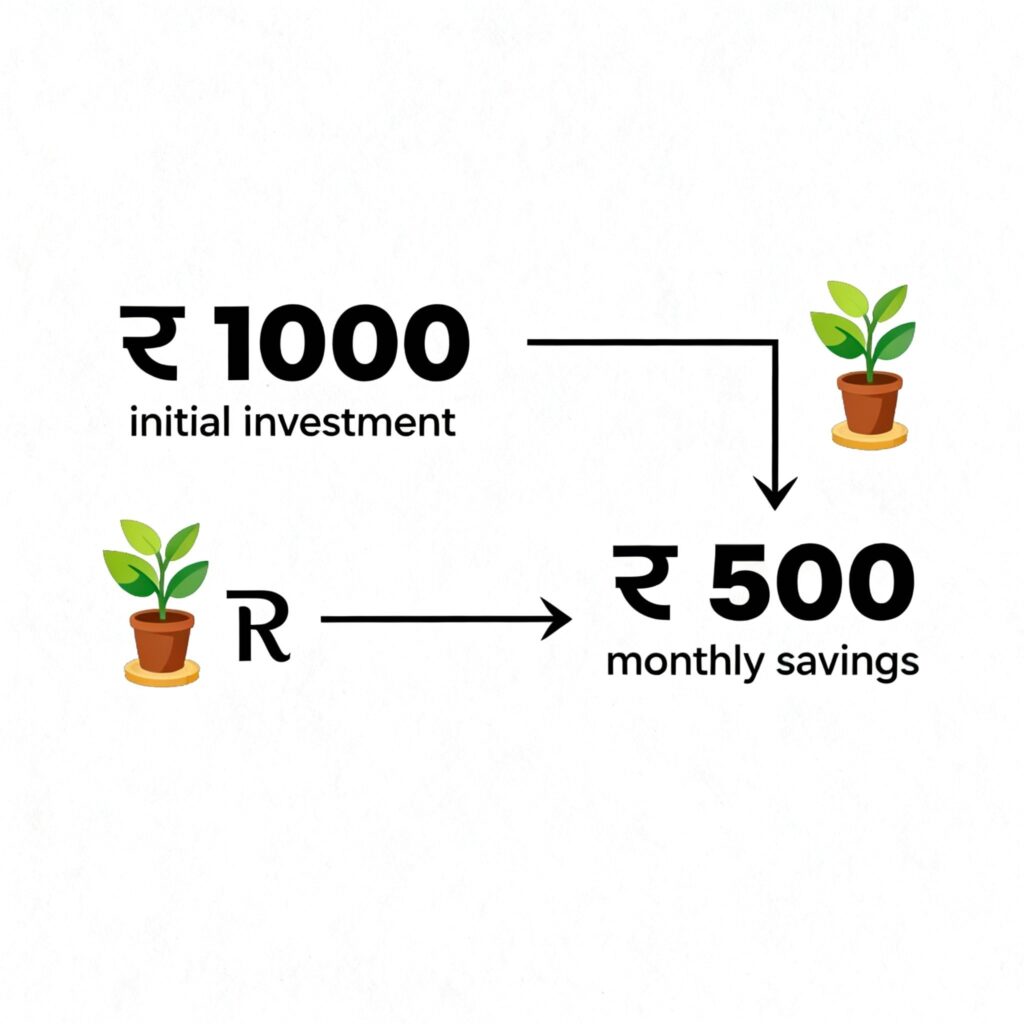
Essential Equipment and Materials for Success
Container Options for Every Budget
Hanging Planters work excellently for herbs. Kraft Seeds plastic pots (₹50-150 each) feature proper drainage holes and UV resistance. Use 6-8 inch containers for herbs and 10-12 inch for vegetables. Purchase from Amazon India, local nurseries, or BigBasket for convenience.
Wall-Mounted Systems include pocket planters (₹300-800 for 6-pocket systems) and modular towers (₹1200-2500). These create professional appearances from day one.
Zero-Cost DIY Options use 2L soft drink bottles from home, shoe organizers (₹200-400), wooden vegetable crates (₹50-100 each), or tetra pack milk containers for seed starting.
Support Structures That Actually Work
Trellis Systems can be bamboo grids (₹150-300) which are natural and biodegradable, or metal mesh panels (₹200-500) for long-term durability. Always use wall anchors rated for minimum 15kg weight capacity.
Wooden Framework options include ready-made garden center frames (₹500-1500) or DIY construction using hardware store materials (₹200-400).
Growing Medium and Nutrition
Soil Mix Components should include Cocogarden cocopeat blocks (₹80 per 5kg), Organic Mantra vermicompost (₹150 per 5kg), and local garden soil (₹20-40 per kg). Add extra cocopeat in heavy clay soil areas for improved drainage.
Seasonal Fertilizer Strategy requires liquid seaweed in summer (lower salt content), slow-release pellets during monsoon (won’t wash away), and bone meal in winter for strong root development.
Irrigation Tools range from drip systems (₹300-800) for automatic watering to simple spray bottles (₹50) and small watering cans (₹150) for manual care.
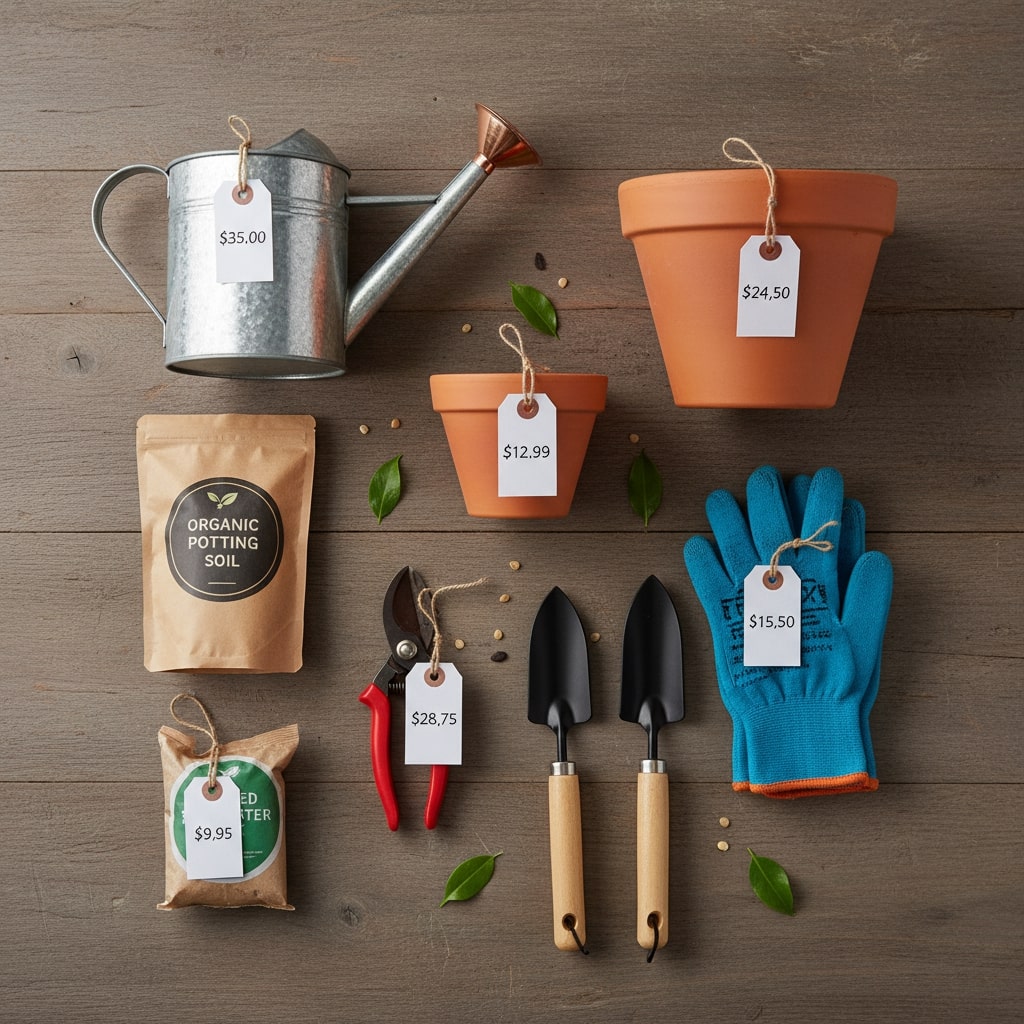
Step-by-Step Vertical Garden Creation
Location Selection and Assessment
Sunlight Mapping involves tracking your balcony from 6 AM to 12 PM, marking shadow patterns. Note harsh afternoon sun areas (2 PM-5 PM). Remember winter sun sits lower while summer sun blazes higher, affecting plant placement.
Wind and Weather Evaluation uses ribbon testing – tie ribbons and observe movement. Gentle breezes benefit plants, while strong winds cause damage. Covered areas work better during monsoon. Maintain 2-foot walking paths for maintenance access.

Structure Installation Methods
Budget Pallet Garden (₹200-500)
Materials needed: one pallet (₹100), landscape fabric (₹150), screws (₹50), mounting brackets (₹200). Sand pallet surfaces smooth, treat with neem oil solution for pest prevention. Staple landscape fabric backing, creating plant pockets. Mount using heavy-duty L-brackets after confirming wall supports 20kg weight. Cut 6-inch square holes spaced 8 inches apart. Drill additional drainage holes at each pocket bottom.
Free Bottle Garden (₹0-100)
Use 6-8 bottles with rope (₹50) and basic tools. Remove labels completely, wash thoroughly. Cut 4×2 inch rectangle holes on bottle sides. Create 4-5 small drainage holes at bottoms. Thread rope through caps with secure knots, hanging bottles 12 inches apart vertically.
Professional Wall System (₹800-1500)
Mark wall studs for secure mounting. Install horizontal wooden battens every 18 inches. Use heavy-duty hooks rated for plant weight. Tilt planters slightly for proper drainage. Plan expansion space for future additions.
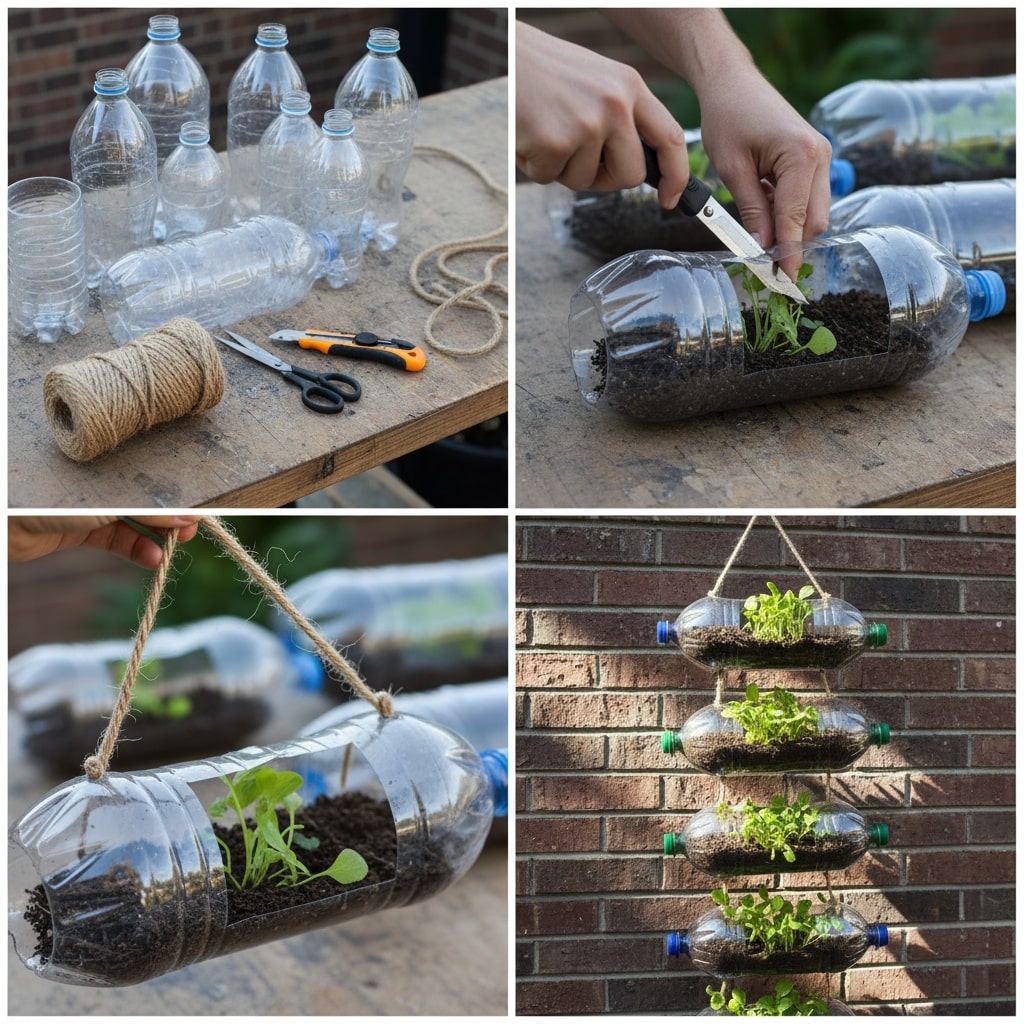
Soil Preparation Formula
All-Season Base Recipe combines 40% garden soil + 30% cocopeat + 30% compost. Summer modifications add 10% extra cocopeat for moisture retention. Monsoon adjustments include sand for better drainage. Winter enhancements add extra compost for slow nutrient release.
Quality Testing Methods ensure water drains within 2-3 minutes for proper drainage. Most vegetables prefer 6.0-7.0 pH levels. Add handful of vermicompost monthly for continuous nutrition boost.
Strategic Plant Arrangement System
Three-Tier Sun-Based Layout
Top Level (6+ hours direct sun): Heavy feeders like tomatoes, chilies, brinjal thrive here. Plant basil with tomatoes for natural pest control benefits. These require strong support cages or stakes.
Middle Level (4-6 hours sun/partial shade): Perfect for herbs including mint, coriander, fenugreek, methi, and leafy vegetables like spinach, lettuce, rocket leaves. Mint and coriander make excellent companion plants.
Bottom Level (2-4 hours indirect light): Shade-tolerant plants like money plant, pothos, ajwain work perfectly. Ground cover plants like brahmi and small succulents purify air despite minimal light.
Indian Seasonal Calendar optimizes planting timing. Summer (March-June) suits heat-tolerant herbs and bottle gourd. Avoid new plantings during monsoon (July-September) while maintaining existing plants. Winter (October-February) provides ideal conditions for most vegetables and herbs. Money plant, mint, and curry leaves grow successfully year-round.
For comprehensive plant selection covering 25+ options perfect for Indian conditions, visit our detailed guide on Which Plants Are Good for a Vertical Garden.
Planting Implementation Technique
Create 1-inch drainage layers using stones or broken pottery at container bottoms. Fill containers 2/3 with prepared soil mixture. Follow seed packet spacing guidelines (typically 4-6 inches apart). Apply gentle watering after planting, avoiding soil flooding. First week requires daily monitoring, watering only when topsoil feels dry to touch.
Maintenance Schedule Organization
Daily Tasks (5-10 minutes) include twice-daily moisture checks in summer, fungal issue monitoring during monsoon with drainage verification, and once-daily checking in winter months.
Weekly Responsibilities involve liquid fertilizer application (weekly in summer, bi-weekly in winter), pruning dead or diseased plant parts, and applying natural neem spray for pest prevention when necessary.
Monthly Deep Maintenance includes fresh compost layer addition, loose support tightening, and succession planting planning for continuous harvest cycles.
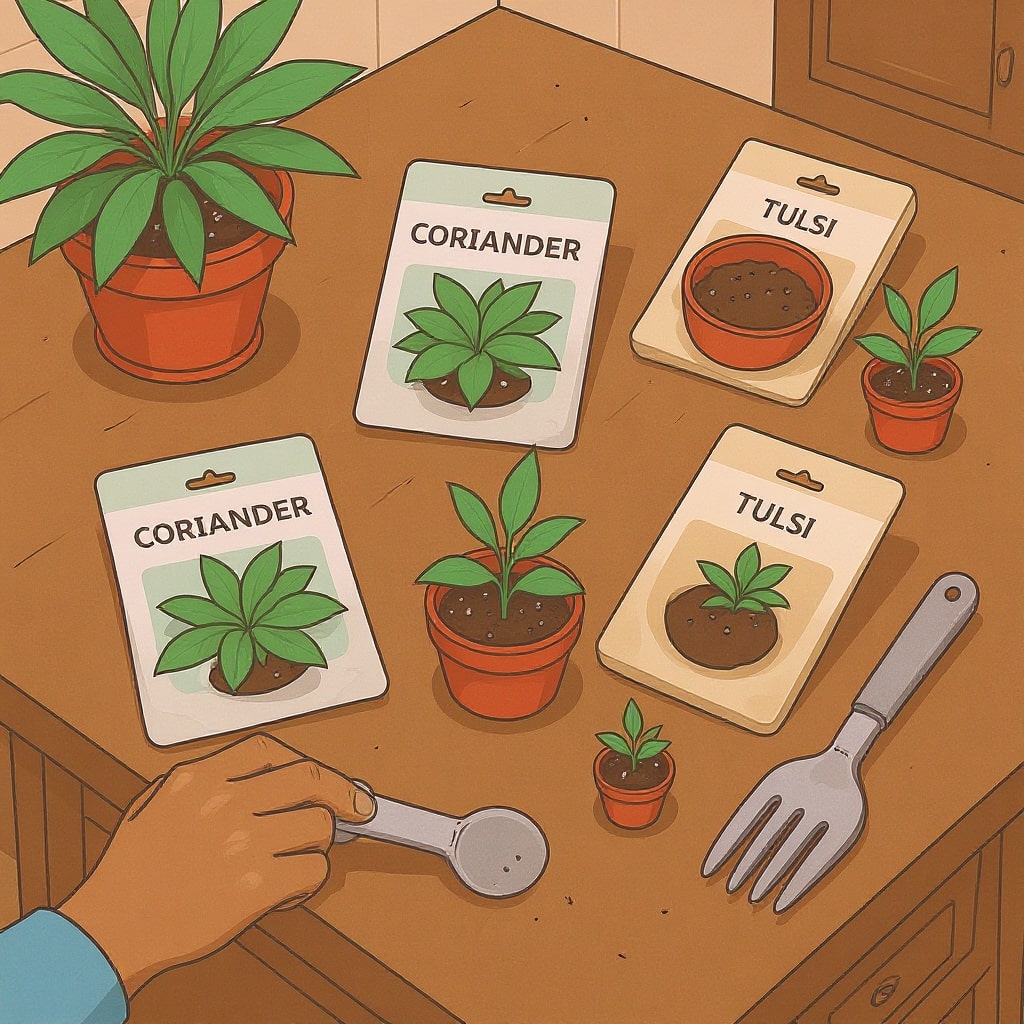
Best Plant Selections for Indian Vertical Gardens
Beginner-Friendly Herb Champions
Year-Round Performers include mint (pudina) which can be planted anytime and harvested within 30 days – grows aggressively and spreads quickly. Curry leaves planted as saplings in winter provide year-round harvesting. Ajwain sown October-February offers excellent medicinal properties and culinary uses.
Seasonal Specialists like coriander (dhania) thrive October-January during cool seasons. Harvest occurs 45-60 days from seed – practice succession planting every 2 weeks for continuous supply. Fenugreek (methi) planted November-December serves dual purposes as both leaves and seeds prove useful. Grows excellently with peas as companion plants.
Heat-Resistant Survivors include basil (tulsi) which tolerates extreme heat, holds sacred significance, and naturally repels mosquitoes. Lemongrass survives neglect once properly established in containers.
Climbing Vegetables for Vertical Success
Heavy Support Requirements suit bottle gourd (lauki) planted February-March requiring minimum 6-foot trellis height, typically yielding 4-6 gourds per plant. Bitter gourd (karela) offers diabetes management benefits but requires both male and female plants for successful fruiting.
Light Support Compatibility works for winter peas which fix nitrogen naturally and improve soil quality. French beans grow rapidly with 60-day harvest cycles and minimal support needs.
Air-Purifying Ornamental Options
Money plants effectively remove formaldehyde, growing successfully in water or soil mediums. Pothos plants are NASA-approved air purifiers requiring minimal maintenance efforts. Snake plants release oxygen during nighttime hours, making them perfect for bedroom placement.
Strategic Companion Planting Combinations
Tomato-basil partnerships work because basil naturally repels tomato-specific pests. Mint-coriander combinations succeed due to different root depths creating no resource competition. Marigold-vegetable pairings provide natural pest control while attracting beneficial insects for pollination.

Maintenance Excellence and Problem-Solving
Season-Specific Watering Strategies
Summer Management (March-June) requires daily watering, sometimes twice during peak heat periods. Optimal timing includes early morning (6-7 AM) and evening (6-7 PM) sessions. Use deep watering methods while avoiding leaf wetting during daytime hours. Soil should maintain moisture 2 inches deep.
Monsoon Handling (July-September) addresses overwatering challenges and fungal disease prevention. Improve drainage systems, and reduce watering frequency significantly. Move containers to covered areas during heavy rainfall periods.
Winter Care (October-February) involves watering every 2-3 days adequately. Mid-morning timing (10-11 AM) works optimally. Focus on reduced water amounts but increased nutritional support.
Natural Pest Management Solutions
Homemade Spray Formulas include neem oil solution (2 tsp neem oil + 1 tsp soap + 1 liter water) for general protection. Garlic spray involves blending 4 garlic cloves + 1 cup water, straining before application. Mild dish soap solutions effectively control aphid infestations.
Beneficial Insect Attraction uses marigolds to attract ladybugs that consume aphids naturally. Flowering herbs like basil attract bees essential for pollination processes.
Common Problem Diagnosis and Solutions
Yellowing Leaf Issues with mushy stems and sour soil odors indicate overwatering – improve drainage immediately and reduce watering frequency. Yellow leaves with firm stems suggest nutrient deficiencies – apply liquid fertilizer and add compost. Bottom leaf yellowing first indicates natural aging – simply remove and compost them.
Growth Problem Solutions address leggy, pale plants needing more light exposure – relocate to brighter positions or add grow lights. Hard, compacted soil requires cocopeat addition and gentle soil loosening.
Climate-Specific Challenges include summer heat stress requiring afternoon shade using mesh cloth. Mulch soil surfaces with dried leaves preventing water loss. Monsoon demands good air circulation, avoiding overhead watering methods. Winter brings normal slow growth and increased aphid populations requiring preventive neem spray applications.

Smart Shopping Guide for Indian Gardeners
Product Recommendations by Category
| Product Type | Best Option | Key Benefits | Price Range | Starter Quantity |
|---|---|---|---|---|
| Hanging Containers | Kraft Seeds Plastic Pots | Proper drainage, UV resistance | ₹80-120 each | 4-6 containers |
| Vertical Stands | 4-Tier Metal Rack | 12-16 plant capacity, rust-proof | ₹1200-1800 | 1 complete unit |
| Growing Medium | Cocogarden Cocopeat Block | Expands to 75L, organic composition | ₹120-180 | 2 blocks |
| Fertilizer | Organic Mantra Vermicompost | Nutrient-rich, 5kg package | ₹200-300 | 1 pack (6-month supply) |
| Watering System | Drip Irrigation Kit | Automatic operation, time-saving | ₹400-800 | 1 kit (10-plant coverage) |
| Garden Tools | Mini Tool Set | Spade, pruner, gloves included | ₹150-300 | 1 complete set |
Budget-Based Setup Options
₹500 Starter Package includes 3 hanging pots + basic soil mix + herb seeds – perfect for mint, coriander, basil cultivation.
₹1000 Complete Setup provides 6 containers + soil + fertilizer + basic tools – supports 8-10 different plant varieties successfully.
₹2000 Premium System offers vertical stand + drip irrigation + diverse plant selection – complete balcony transformation solution.
Indian Shopping Locations
Online Platforms include Amazon India (widest variety), Flipkart, Myntra Garden sections offering convenience and customer reviews.
Physical Stores feature local nurseries for quality inspection, BigBasket for soil and fertilizer purchases with home delivery.
Budget Shopping Areas include Sadar Bazaar Delhi, Crawford Market Mumbai for wholesale pricing on bulk purchases.
Organic Retailers encompass Organic India outlets and local organic shops for premium material sourcing.
For detailed construction instructions with precise measurements and complete material lists, visit our comprehensive resource at How to Build a Vertical Garden Planter.
Space-Based Recommendations
Small Balcony (3×4 feet) accommodates maximum 6-8 hanging pots without overcrowding issues.
Medium Balcony (4×6 feet) supports 1 vertical stand plus additional hanging pots effectively.
Large Balcony (6×8+ feet) allows multiple vertical systems for extensive garden development.
Choose containers in matching color schemes for aesthetic appeal. Neutral colors like terracotta or white complement any home decor style perfectly.

Real Success Transformation Story
Priya’s journey from our introduction demonstrates the power of vertical gardening techniques. Six months after starting, she grows 15 herb and vegetable varieties on her tiny balcony. Her monthly herb grocery expenses dropped from ₹800 to ₹100. Most importantly, she feels genuinely connected to nature despite living on Mumbai’s 12th floor.
What are the techniques of vertical gardening that enabled this transformation? The techniques of vertical gardening we’ve explored – from simple bottle hanging systems to sophisticated wall planter arrays – represent proven methods thousands of Indian gardeners implement successfully.
Whether beginning with ₹200 bottle gardens or investing ₹2000 in complete systems, fundamental principles remain constant: proper drainage, intelligent plant selection, consistent care practices. These techniques of vertical gardening function effectively in any Indian city, from Mumbai’s humidity to Delhi’s temperature extremes.
Your gardening journey begins with one plant in one container. Don’t wait for perfect setups – start small this weekend and expand gradually. Every expert gardener started as a beginner willing to experiment and learn.
The techniques of vertical gardening transform not only your physical space but your relationship with fresh, healthy food production. Master these fundamentals, then explore our complete transformation guide at How to Make a Vertical Garden in Balcony for comprehensive garden space creation.
Ready to transform your apartment? Select your starter kit and join thousands of Indian apartment dwellers enjoying fresh, homegrown food daily. Your green transformation starts this weekend!
Frequently Asked Questions About Vertical Gardening
Q1: Which plants work best for vertical gardening beginners in India?
Money plant, mint, coriander, and basil represent ideal beginner choices. These adapt perfectly to Indian weather conditions and forgive common beginner mistakes. Money plant grows in plain water, while herbs like mint and coriander provide immediate cooking benefits for your kitchen.
Q2: What’s the realistic cost for starting vertical gardening in India?
Basic setups begin from ₹500-1000 covering 4-6 hanging pots with soil and seeds. Complete systems with vertical stands and drip irrigation cost ₹2000-3000. This remains significantly more affordable than hydroponic systems costing ₹20,000+.
Q3: Can renters create vertical gardens without drilling walls?
Absolutely possible! Use over-door shoe organizers, balcony railing planters, or freestanding vertical plant stands. These solutions require zero drilling and work perfectly in rental properties without damage concerns.
Q4: How frequently should I water vertical gardens in Indian climate?
Summer requires daily watering (sometimes twice daily), monsoon needs reduced frequency focusing on drainage, winter requires watering every 2-3 days. Always check soil moisture before watering by inserting finger 1-2 inches deep into soil.
Q5: Which vegetables grow successfully in vertical systems?
Cherry tomatoes, chilies, green beans, peas, bottle gourd, bitter gourd, and leafy vegetables like spinach and lettuce thrive vertically. Use deeper containers (10-12 inches) for vegetables compared to herbs (6-8 inches).
Q6: How can I prevent pests naturally in vertical gardens?
Apply neem oil spray (2 tsp neem + 1 tsp soap + 1L water), plant marigolds attracting beneficial insects, ensure adequate air circulation between plants. Companion planting like basil with tomatoes naturally repels specific pests effectively.
Q7: Which direction should vertical gardens face in Indian homes?
South and east-facing balconies receive optimal sunlight for most plant varieties. North-facing locations suit shade plants like pothos and snake plants. Avoid harsh west-facing afternoon sun during intense summer months for delicate plants.

About the Author: Zaid Ansari is an experienced gardening enthusiast and content creator who helps Indian beginners grow fresh, organic food at home using easy vertical gardening techniques.